Over the years, my garage has been a laboratory, tinkering away at paint corrections and detailing quirks that most car owners wouldn’t dare tackle. And then comes WD-40—a product known all too well in the automotive world, yet often misunderstood. Is WD-40 safe for paint? It’s a question I’ve grappled with countless times, apprenticed in the pursuit of that perfect glossy finish without compromise. As an engineer turned detailing enthusiast, I’ve seen WD-40 silence a creaky hinge and ease a reluctant bolt back to life. But its place in my detailing toolkit? That’s a different story. Understanding its use on automotive finishes is crucial; after all, what starts with a simple spray could lead to unintended consequences. So, why is there this ongoing fascination and apprehension about WD-40’s compatibility with car paint? Let’s delve deeper, unraveling myths and uncovering truths in the detailing realm.
What is WD-40?
The Composition of WD-40
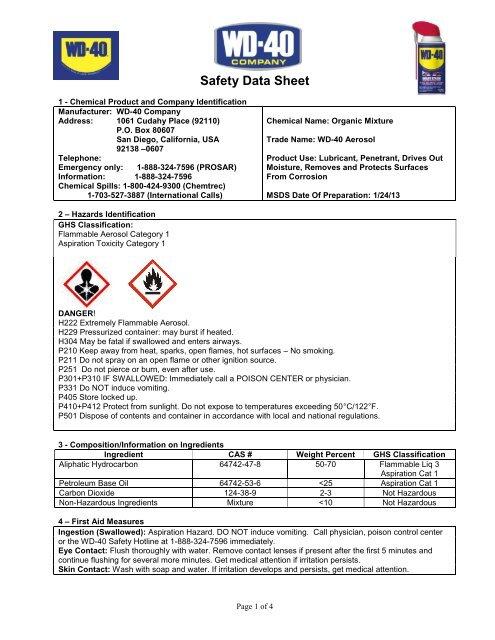
Did you know that WD-40 consists of more than just oil? As a former engineer, I was fascinated by its composition when I first delved into car detailing. At first glance, WD-40 seems like a simple product, but it’s actually a complex blend designed for versatility. It’s not just an oil; it combines oil with various other components like solvents, which make it a powerful agent for a wide range of applications.
Understanding the ingredients of WD-40 is crucial, especially when considering its use on something as delicate as car paint. The mix of lubricating oils, rust prevention compounds, and thinning solvents contribute to its effectiveness as an oil-based cleaner for car paint. Each ingredient serves a distinct purpose—some enhance the product’s penetration, while others provide a protective barrier or dissolve rust and sludge.
Knowing these intricacies helps me avoid costly mistakes, ensuring I’m using the right product for the right job. In the next section, let’s explore the common uses of WD-40 and understand how its composition makes it suitable—or not—for various detailing tasks.
Common Uses for WD-40
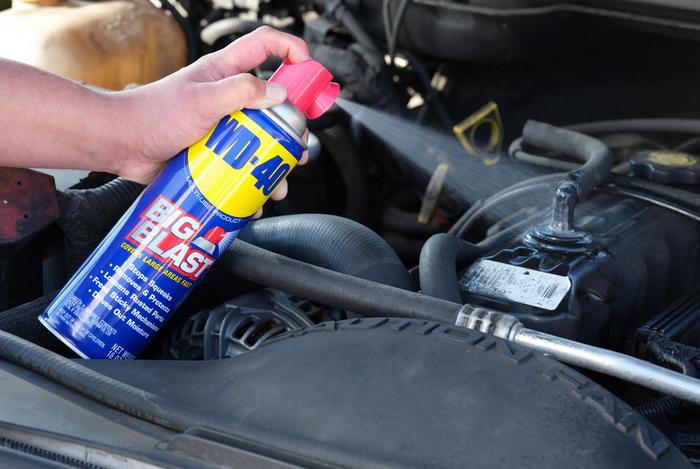
I remember my first encounter with WD-40 during an off-road adventure, battling rusted bolts with remarkable ease. Since then, I’ve come to appreciate its myriad applications, from lubricating metal to temporarily silencing squeaky hinges. What’s the real secret behind WD-40’s multi-purpose reputation? Its unique formulation acts as a quick-fix solution, repelling moisture and preventing corrosion, which makes it indispensable in any toolkit. But when it comes to applying it on car paint, caution is crucial. I’ve learned that while it can temporarily restore shine, improper use might lead to unwanted consequences, like a compromised paint job.
When considering alternative solutions, various WD-40 alternatives for car care exist, each tailored for specific tasks. As an expert detailer familiar with the quirks of automotive finishes, knowing these alternatives can prevent mishaps. Choosing the right product, whether WD-40 or another option, often transforms minor setbacks into seamless successes in my detailing experience.
Why Use WD-40 on Car Paint?
Benefits of Using WD-40
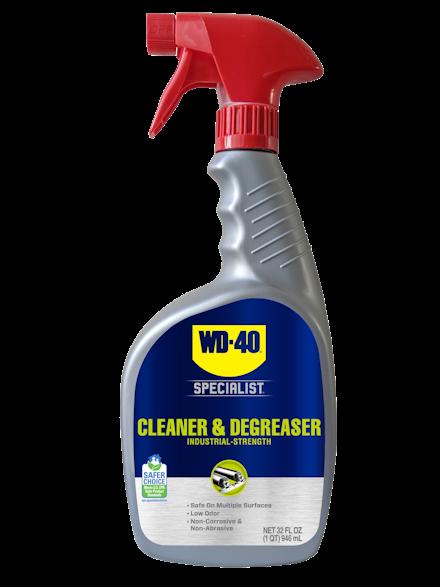
Can WD-40 actually make the task of cleaning your car easier? As an expert detailer, my personal journey with WD-40 began on a dusty trail with my Jeep plastered in stubborn road grime, tree sap, and bug splatter. That’s when a fellow detailer introduced me to this gem for tar removal car paint situations. Over time, I discovered that WD-40 is invaluable during certain tough clean-ups—standing as a versatile ally in a detailer’s toolkit.
The key advantage of using WD-40 lies in its effectiveness at breaking down contaminants without stripping the paint. It efficiently penetrates and loosens bonded grime, making subsequent scrubbing nearly effortless. Incorporating it into your arsenal of car detailing tips can dramatically cut down prep time, especially when dealing with problematic residues. However, applying it requires precision and caution. Understanding how it interacts with different surfaces ensures you optimize its usage while keeping your vehicle’s finish intact. Carefully controlled application can save you time and elbow grease, which any car enthusiast or professional detailer will tell you is priceless.
Always remember to follow it up with proper aftercare, as this method isn’t a replacement but a complement to your standard maintenance routines. Next, let’s delve into real-world user experiences to illustrate diverse outcomes and confirm the effectiveness others have found with WD-40.
User Experiences

After spending countless hours immersed in car detailing forums, I’ve come to appreciate the insights and real-world feedback offered by passionate enthusiasts. What do the real enthusiasts say about using WD-40 on their cars? In one compelling discussion I encountered, a car owner lamented over the persistent residue left after an overzealous application of WD-40. This experience underlines the crucial role of moderation and the proper technique when using such products.
Through these shared stories, I’ve learned that while WD-40 can be effective for removing adhesives and minor paint scuffs, it’s essential to avoid excessive application to prevent ongoing residue issues. Many detailers also stress the importance of thorough cleaning to remove any WD-40 residue on car surfaces, which can otherwise attract dust and grime. These user stories solidify the argument for cautious application and offer valuable lessons for anyone considering using WD-40 on their car paint. My expertise in the field confirms that listening to and learning from these practical experiences enriches our collective understanding, ultimately guiding us to better care practices for our vehicles.
What Are the Risks?
Potential Damage to Paint
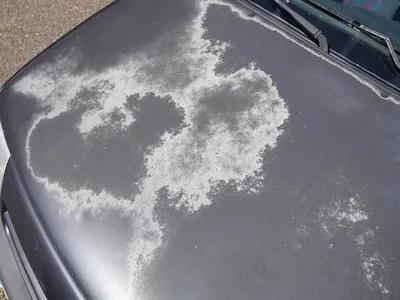
Could WD-40 do more harm than good when it comes to your finish? As a seasoned detailer, I’ve grappled with this question countless times. My firsthand experiences have highlighted that while WD-40 can initially make damages vanish, it doesn’t take long before its “residue” becomes a magnet for dirt and grime. Imagine turning a freshly detailed Jeep into a dull, shabby ride just because a quick fix seemed appealing. You see, those immediate results often mask what might unfold over time, calling into question whether it’s worth compromising your car’s most visible feature.
In the context of “automotive paint protection,” making informed decisions is crucial. WD-40 might seem harmless, but its potential to damage your paint’s longevity is not to be dismissed. The trick is always balancing risk with reward. From my perspective, understanding that WD-40 leaves behind a coating that interferes with the aesthetic and durability of your vehicle’s finish is vital. As we dive into these risks, it’s essential to grasp their long-term implications, illuminated by professional insights and real-world implications on car care.
Expert Opinions

As we delve into ‘What Are the Risks?’, it’s crucial to explore the expert opinions surrounding the use of WD-40 on car paint. What do the pros really think about using WD-40 on car paint? Through countless conversations with industry specialists, I’ve discovered a mix of endorsements and criticisms, each highlighting the spectrum of risks involved. My technical training aligns with those who caution against using WD-40 as a paint maintenance solution — it’s best suited for specific applications rather than a one-size-fits-all approach.
Consider this: while WD-40 can provide temporary benefits like cleaning tar or bug residue, it lacks the protective longevity offered by products explicitly designed for automotive paint. Experts advise choosing products tailored for the nuanced needs of car paint maintenance, emphasizing prevention over cure to avoid costly repairs down the line. This pragmatic approach resonates deeply with my practice, reinforcing that shortcuts can often lead to unwanted repercussions. Navigating these expert insights allows us to make informed choices, ensuring our vehicles remain pristine without compromising their integrity.
How to Safely Use WD-40 on Car Paint
Preparation Steps

Are you prepared for the do’s and don’ts of using WD-40? When it comes to car paint maintenance, the devil is in the details. Having worked as a mechanic, I always consult a preparation checklist before applying anything to a vehicle. This foresight is crucial in understanding the environment, paint type, and even weather conditions, thus preventing potential mishaps. Knowing the impact of each variable on automotive paint protection can save you from costly errors. Being prepared isn’t just a step; it’s a shield against the unforeseen.
First, assess your surroundings. Choose a space that is well-ventilated and protected from direct sunlight to avoid premature drying. Identify the type of paint on your vehicle—some finishes react differently to products like WD-40. Finally, monitor weather conditions; humidity and temperature can influence results. This preparation phase sets the stage for safe and effective use. Transitioning into the next steps, the right techniques can genuinely make the difference: mastery gleaned from experience, ensuring your car remains pristine.
Application Techniques
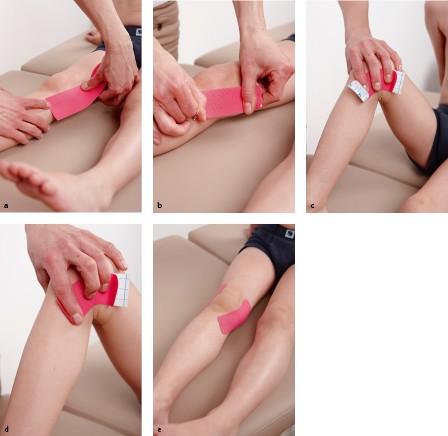
What’s the secret method for applying WD-40 without damage? The answer lies in a technique that balances precision with the right amount of coverage. During a detailed restoration project, I experimented with spray patterns to avoid oversaturation. I quickly realized that lighter applications were paramount in achieving a safe yet effective treatment for car paint. By atomizing the spray in quick, controlled bursts at a safe distance, I ensured that I targeted just enough product without overwhelming the surface.
This method is part of the broader understanding of WD-40 uses in automotive, where the goal is to maintain a balance between effectiveness and safety. It’s critical to keep the nozzle moving and maintain steady control to avoid pooling. Remember, less is more; this application technique not only protects the paint but also enhances its appearance. My takeaway from years of practice? Precision makes all the difference—executed with care, WD-40 can indeed be a friendly companion to your vehicle’s finish.
Aftercare Tips

Think the job is done after applying WD-40? Think again! As an expert in car detailing, I can’t stress enough the importance of aftercare following any WD-40 application on car paint. Early in my career, I learned the hard way — neglecting this crucial step resulted in a dull finish and the accumulation of residue that could have been avoided.
Once you’ve applied WD-40, it’s vital to follow up with a thorough wash using a mild car shampoo. This not only removes excess product but also helps maintain the health and shine of your car’s paint. Regular washes ensure that no trace of the solvent remains, which could potentially harm the finish over time. Additionally, applying a quality wax or sealant subsequently will offer an extra layer of protection and ensure the paint’s longevity.
Proper aftercare is, therefore, a key element of your car paint maintenance regimen. Following these car detailing tips ensures a vibrant and lasting shine for your vehicle. By integrating these practices into your routine, you not only safeguard your car’s appearance but also your investment for years to come.
Alternatives to WD-40
Other Cleaning Products
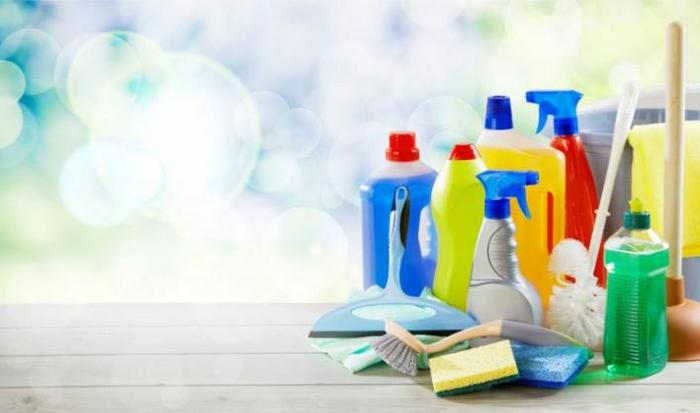
What are some effective alternatives to WD-40 that are safer for your paint?
In my quest to restore cars, I’ve discovered several fantastic alternatives, particularly in the realm of other cleaning products. With my experience in car detailing, I’ve come to appreciate the unique roles that different specialized products play. For instance, specialty bug and tar removers have proven essential in my toolkit. These products are designed specifically for automotive applications, ensuring that they not only clean effectively but also protect the paint from potential damage.
Each alternative has its own set of car detailing tips that maximize its utility. By opting for a tailored approach, I’ve learned to ensure safer applications that align with the specific needs of each vehicle. This journey toward identifying safer options underlines the importance of selecting the right tool for each situation. It’s about understanding the balance between effectiveness and preservation to achieve optimal results without compromising the integrity of the car’s finish.
When to Avoid WD-40
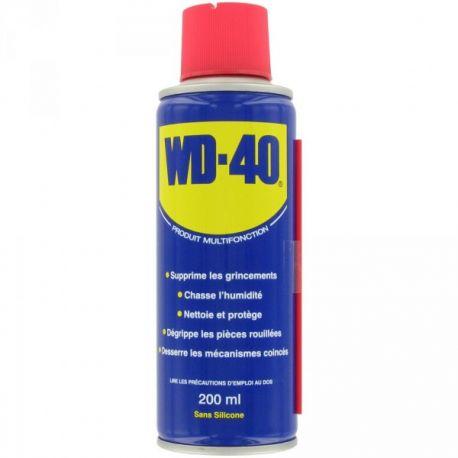
As a seasoned detailer, I’ve seen many car enthusiasts reach for WD-40 due to its versatility, but just because it’s a miracle worker doesn’t mean it’s always the right choice for car paint. Are there scenarios where WD-40 should be off-limits? Absolutely. Once, I tried using WD-40 on an older paint job and ended up with unexpected peeling. That day, I learned that it’s crucial to consider a product’s compatibility before using it. So, is WD-40 safe for paint? In some cases, yes, but caution is key.
WD-40 can degrade certain paint types, particularly those on older cars or custom jobs with non-standard finishes. If you’re dealing with delicate finishes, it’s best to explore alternatives like car-specific lubricants or detailing sprays that are expressly designed for automotive use. My story highlights a fundamental rule in detailing: know your products and their limitations. This foresight ensures your vehicle looks its best while preserving the integrity of its paintwork.
FAQs
Can WD-40 be used on car paint?
What precautions should be taken when using WD-40 on car paint?
Are there alternatives to using WD-40 for cleaning car paint?
Is WD-40 safe for all types of car paint?
Conclusion
Is WD-40 truly a friend or foe to your car’s exterior? Over my years as an engineer turned expert detailer, I have seen firsthand the dual-edged nature of this household staple. While WD-40 offers some benefits for those eyeing quick fixes, it’s essential to tread carefully. Is WD-40 safe for paint? The answer hinges on understanding the potential risks—a misstep could lead to undesirable WD-40 paint damage. Rather than being a one-size-fits-all solution, WD-40 should be used with strategic foresight. My journey has reinforced that informed decisions stem from reliable, lived experiences. By knowing when and how to use WD-40—and when to opt for alternative products—you can preserve your vehicle’s luster for years to come. Let my insights guide you in making choices that align with the long-term care of your auto pride. Remember, intention and caution hand in hand often yield the best results.